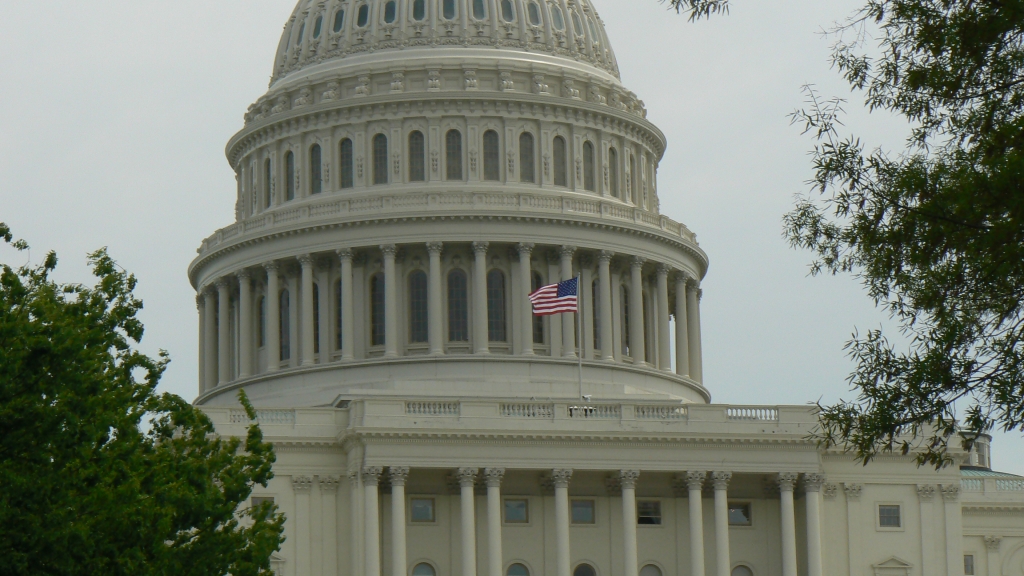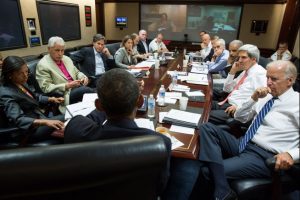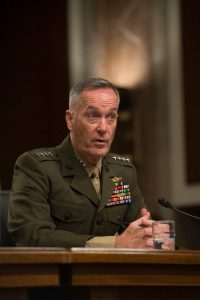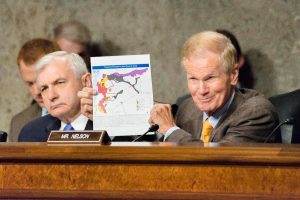 Credit: Misha Popovikj on Flickr
Credit: Misha Popovikj on Flickr
Legislating an Effective Counter-Islamic State AUMF
The United States is currently relying on outdated and mostly irrelevant legislation to justify its ongoing counterterrorism campaigns. Operations targeting violent proto- and non-state actors in Afghanistan, Pakistan, Somalia, Syria, Libya, Yemen, Kenya, and others have relied on the 2001 Authorization for the Use of Military Force which authorizes the use of military force against al-Qaeda and its “associated forces.” The resurgent military presence in Iraq relies for the most part on the 2002 Authorization for the Use of Military Force Against Iraq, authorizing the use of force to eliminate national security threats posed by Iraq (to include the threat of non-state actors operating within Iraq). Most importantly, the United States’ campaign against the Islamic State (IS) in Iraq, Syria, and a host of other locales relies on a combination of the two existing AUMFs to justify the use of military force against the group.

Former President Barack Obama discusses Syria intervention contingencies August 31, 2013
The Problem at Hand
Reliance on the 2001 and 2002 AUMFs for actions targeting the Islamic State is no longer politically, legally, or strategically tenable. In April 2017 a group of 46 congressional representatives sent a letter to House Speaker Paul Ryan casting doubt on the continued use of the current AUMFs. They requested the initiation of “a serious debate” on a new AUMF “that defines the purpose, nature, and limits of U.S. military engagement against the Islamic State.” Government and private legal experts have long questioned the legality of the AUMFs’ application to counterterrorism operations, thereby eroding the legitimacy of subsequent administrations’ legal interpretations.
Reliance on broad authorizations lacking strict political and legislative guidance creates a poor foundation for strategic planning purposes, opening the possibility of perpetuating an ill-defined counter-IS approach. The Trump Administration’s desire to accelerate the counter-IS campaign, and continued congressional interest in an Islamic State focused AUMF, together necessitate a discussion of what a successful IS-specific AUMF would entail.
Legislating Success
A successful Authorization for the Use of Military Force against the Islamic State (AUMF-IS) would build upon the lessons learned from the previous AUMFs and incorporate specific limitations not found in the existing authorizations. An appropriately constructed AUMF-IS must include four elements:

Marine Corps Gen. Joseph F. Dunford Jr., chairman of the Joint Chiefs of Staff, testifes before the Senate Armed Services Committee on U.S. military strategy in the Middle East Oct. 27, 2015. (Photo by Senior Master Sgt. Adrian Cadiz)(Released)
- Politically Defined Objectives and Desired End-State
Explicit objectives and end-state conditions with which the military leadership will use to develop and implement the respective campaign strategy must be included to avoid an open-ended pursuit of poorly defined objectives. - Horizontal (geographic) and Vertical (level of force) Limitations
Horizontal limitations specify the geographic scope of the counter-IS campaign. Vertical limitations identify the specific military capabilities and operational conduct authorized by the legislation. - Explicit Taxonomic Identification
The AUMF should explicitly identify IS and its direct affiliates as the authorized target of military operations. Explicitly identifying IS and its direct affiliates overcomes the ambiguity of the 2001 AUMF’s controversial “associated forces” doctrine. - “Sunset Provisions” or Reauthorization Requirements
This entails a specified end-date or reauthorization requirement to avoid the ambiguous, open-ended nature of the current AUMFs.
These four elements together are the foundation of an AUMF-IS which would constitute a politically, legally, and strategically effective piece of legislation. The explicit definition of politically mandated objectives and the identification of a desired end-state constitute the necessary political guidance military officials require to develop and executive an appropriate campaign.
Horizontal limitations would inhibit the tendency of the United States military and political leadership to engage in mission creep, while remaining focused on the specific threat posed by IS in Iraq, Syria, and other stipulated locales. Vertical limitations provide a strategic road-map that will allow military commanders to conduct operational planning confident that their actions have political and legal top-cover. Importantly, this removes the legal ambiguity commanders currently face when relying on the existing AUMFs to make critical, time-sensitive decisions. Finally, sunset provisions and reauthorization requirements allow for the regular adaptation of the AUMF-IS to address the changing political, legal, and strategic landscape.

U.S. Senate Committee on Armed Services member Senator Bill Nelson during a hearing discussing Counter-ISIL Strategy, on Capitol Hill, July 7, 2015. DoD photo by Army Staff Sgt. Sean K. Harp/Released
Explicit authorities contained within an AUMF-IS would provide concrete political and legal justification for the counter-IS campaign while also providing military officials a robust set of guidelines with which to plan their operations. Importantly, such an authorization would not preclude the expansion or augmentation of American counterterrorism operations. It would, however, provide strict parameters within which those operations would be planned, organized, and executed. Open-ended authorizations for the use of military force should not become the norm. It is imperative that the American government move towards specific authorizations which fulfill the constitutional responsibility to provide checks on executive authority through consultative legislative practices.





